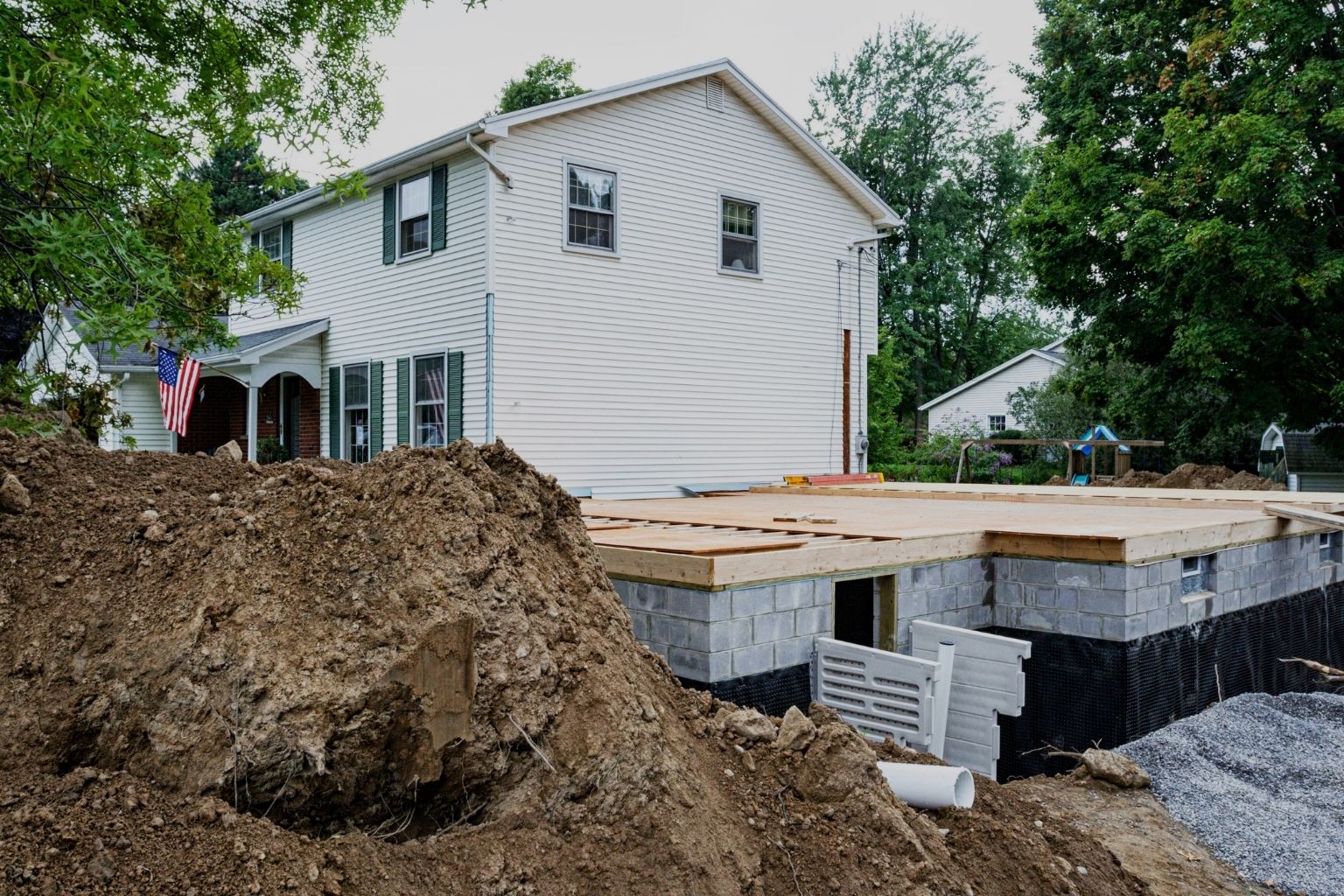Home Additions • Budget & Planning
How Much Does a Home Addition Cost? (Complete 2025 Guide)
Short answer: most homeowners invest $40,000–$90,000 for a modest addition. Finished living space usually falls around $100–$200 per sq ft, while highly customized projects (new foundation, kitchens/baths, complex structure) can reach $200–$300+ per sq ft. Converting existing areas—like a garage, attic, or basement—is typically the most budget‑friendly path.
Home Addition Cost per Square Foot
“Price per square foot” is a helpful starting point, but your final number depends on the room type, structure, utilities, and finish level.
| Finish Level | What’s Included | Typical Cost / Sq Ft |
|---|---|---|
| Essential / Builder‑Grade | Simple footprint; standard windows/doors; basic lighting; paint; LVP or carpet | $100–$150 |
| Mid‑Range | Better windows; more lighting; quality trim; tile in wet areas; semi‑custom elements | $150–$220 |
| High‑End / Custom | Complex structure; large spans; premium windows; custom cabinetry; stone/tile; designer fixtures | $220–$300+ |
Home Addition Costs by Type
Use these ranges to set expectations. Local market rates, codes, and selections will influence where your project lands.
| Addition Type | Typical Size | Ballpark Cost | Notes |
|---|---|---|---|
| Small bump‑out | +100–150 sq ft | $8,000–$25,000 | Great for a breakfast nook, pantry, or expanding a tight room. |
| Bedroom addition | 200–400 sq ft | $25,000–$80,000 | Lower cost if minimal structural changes are needed. |
| Bathroom addition | 50–120 sq ft | $20,000–$60,000 | Plumbing fixtures and tile drive the budget. |
| Kitchen expansion | 120–300 sq ft | $40,000–$100,000+ | Appliances, cabinetry, and utilities add complexity. |
| Primary suite addition | 300–600+ sq ft | $60,000–$180,000+ | Walk‑in closet + bath significantly increase cost. |
| Mother‑in‑law suite / ADU | 300–800+ sq ft | $100,000–$300,000+ | Kitchenette, bath, and separate utilities elevate price. |
| Second‑story addition | 500–1,000+ sq ft | $100,000–$250,000+ | Requires structural work, stair integration, roofing. |
| Sunroom / 3‑season room | 120–300 sq ft | $20,000–$60,000 | Conditioned four‑season rooms cost more. |
| Garage conversion | 300–500 sq ft | $15,000–$50,000 | Economical if slab is sound and insulation is added. |
| Basement finishing | 500–1,000+ sq ft | $25,000–$90,000+ | Moisture control, egress, and layout affect price. |
10 Biggest Cost Drivers
- Square footage & shape: Bigger, more complex footprints cost more.
- Structure: Long spans, steel beams, or removing load‑bearing walls adds engineering and labor.
- Foundation: New footings, slabs, crawlspaces, or piers.
- Roofing & tie‑ins: Matching pitches, dormers, and valleys increase craft time.
- Utilities: Extending plumbing/HVAC/electrical or upgrading service panels.
- Windows & doors: Size, count, and performance ratings (e.g., low‑E, impact‑rated).
- Finishes: Cabinets, counters, tile, flooring, trim packages.
- Site conditions: Limited access, grading, drainage, tree work, or tight lots.
- Permits & inspections: Local code path and plan review timelines.
- Market forces: Material prices and labor availability in your region.
Don’t Forget These Hidden & Soft Costs
| Item | What it covers | Typical Impact |
|---|---|---|
| Design & drawings | Architectural plans, permit sets, 3D options | $2,000–$15,000+ depending on scope |
| Engineering | Structural calcs, beam sizing, shear walls | $1,000–$6,000+ |
| Permits & inspections | Municipal fees, plan review | $1,000–$5,000+ (varies by city) |
| Surveys & site reports | Property survey, soils, floodplain checks | $800–$4,000+ |
| Utility upgrades | Panel upsizing, sewer line, water service | $1,500–$10,000+ |
| Abatement | Asbestos/lead paint remediation if present | Project‑specific |
| Temporary living & protection | Dust control, storage pods, short‑term stay | Plan a buffer |
| Landscaping & hardscape | Repair yard, walks, patios after construction | Often overlooked |
Contingency: set aside 10–20% of your build number for surprises and for upgrades you’ll want once walls are open.
Typical Timeline: From Idea to Move‑In
- Discovery & budgeting: 1–3 weeks — scope, ballpark, feasibility.
- Design & selections: 3–8+ weeks — layout, elevations, fixtures, finishes.
- Permitting: 2–8+ weeks — varies by municipality.
- Construction: 8–24+ weeks — depends on size/complexity and weather.
- Punch list & closeout: 1–3 weeks — final adjustments, inspections, warranties.
A Simple Way to Build a Budget
- Choose a tier from the cost‑per‑sq‑ft table (essential, mid‑range, custom).
- Multiply by square footage. Example: 350 sq ft at $175 = $61,250.
- Add soft costs (design, permits, engineering). Example: $6,000.
- Add 10–20% contingency. Example (15%): $10,125.
- Total planning number: $61,250 + $6,000 + $10,125 = $77,375.
How Do People Pay for an Addition?
- HELOC: Flexible, interest‑only during draw; variable rate.
- Cash‑out refinance: One new mortgage; good if rates are favorable.
- Renovation loans (203(k), Homestyle): Rolls improvements into financing; more paperwork.
- Construction loan: Short‑term draws during build; converts to permanent financing.
- Savings + staged phases: Tackle shell now, finishes later (where allowed by code).
Will a Home Addition Add Value?
Generally, yes—especially when you add livable square footage that buyers want. Bedrooms and bathrooms help appraisals; kitchen and primary‑suite expansions boost everyday livability; and a well‑executed ADU can create potential rental income where local ordinances allow. Work with a contractor who understands local comps so your design aligns with neighborhood expectations.
Why Homeowners Choose MAG Development
- Design‑build clarity: one partner from drawings to punch list.
- Transparent allowances: clear selections and line items reduce surprises.
- Permit navigation: we coordinate drawings, submittals, and inspections.
- Clean job sites: dust control, protection, and respectful crews.
- Reliable schedules: honest timelines with proactive communication.
Thinking about an addition? Explore more tips on our remodeling blog or request a consultation with MAG Development.
Home Addition FAQs
Is it cheaper to build up or out?
Building out is simpler when your lot allows it. Building up can avoid new foundation costs but often requires more structural work (engineering, stairs, roofing), which can offset savings.
What is the cheapest way to add space?
Converting existing space—garage, attic, or basement—is usually the most cost‑effective because the exterior shell already exists.
Do I need a permit for a home addition?
Almost always. Structural changes, utilities, and new habitable space require permits and inspections. We handle drawings and submissions to keep the process smooth.
Will I have to move out during construction?
Not always, but it depends on the scope. Expect noise, dust, and some utility interruptions. We phase work and add protection to minimize disruption.
How big should my addition be?
Right‑sizing matters. Many primary suites run 300–500 sq ft; family room/kitchen expansions often add 200–400 sq ft. We’ll model options so you only build what you’ll truly use.
Budget ranges in this guide are directional and assume typical residential conditions. After a site visit and design consult, we’ll provide a detailed, line‑item estimate tailored to your home.

